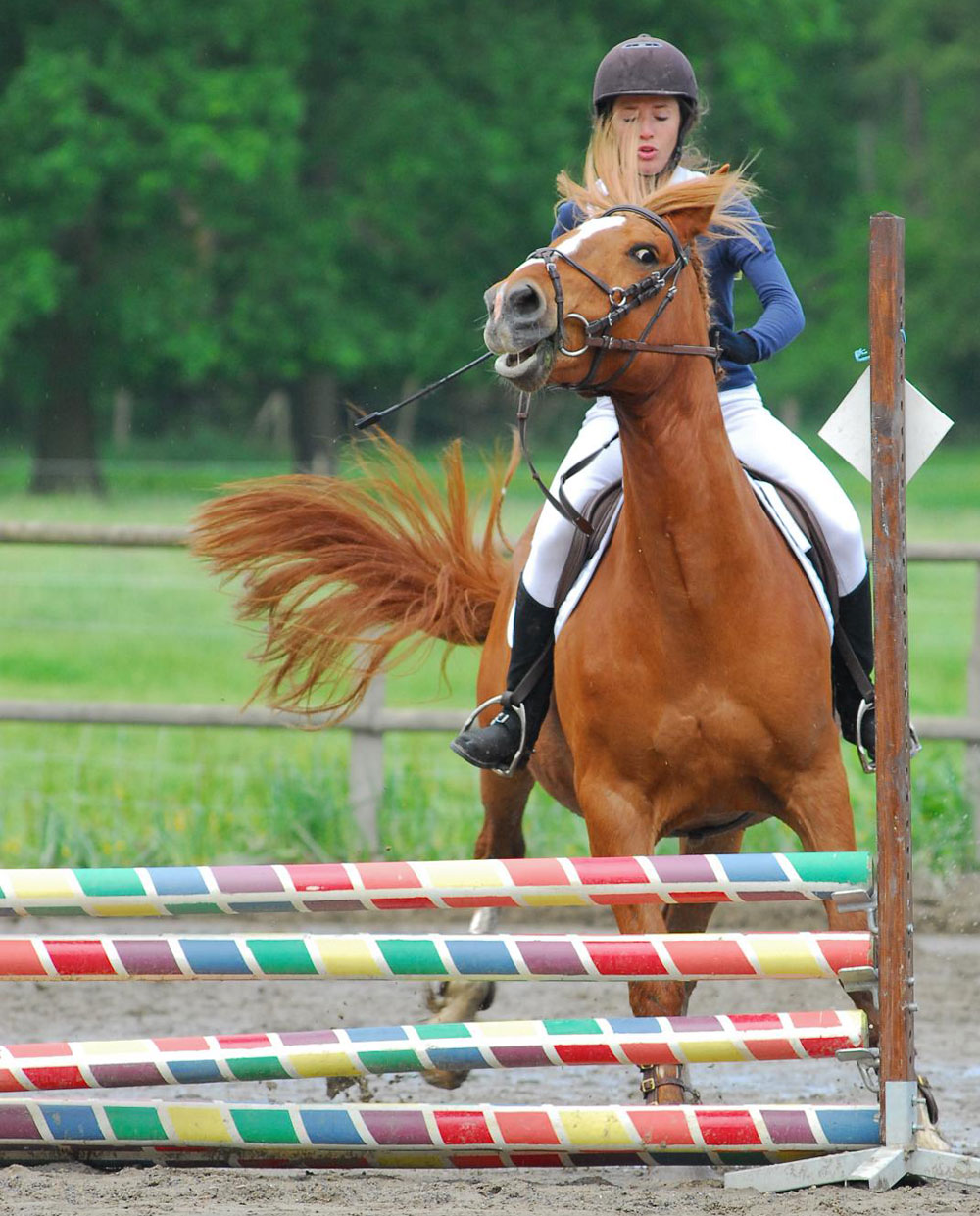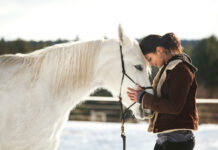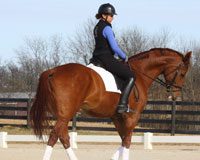Bad spots aren’t the only cause of refusals. Here are three more jumping mistakes that could put the brakes on your jumping: Riding the wrong track; losing your position; and lack of commitment.

Riding the Wrong Track:
One of the first jumping mistakes that are made is riding the wrong track. A course of jumps is really just a flatwork pattern consisting of lines and half-circles (turns). Keep that in mind as you ride the track, or path, to each jump. Ragged approaches that lack a sense of purpose or which inadvertently steer your horse toward the jump standards invite refusals.
Losing Your Position:
A very common jumping mistake is losing your position over the jump. The act of getting left behind punishes the horse for jumping. After getting banged in the mouth repeatedly, most horses refuse in protest.
If you’re frequently left behind, concentrate on perfecting the classic two-point position combined with a simple crest release. Then put them to work over ground poles and cross-rails until both are automatic.
Lack of Commitment:
Do you stop riding at the base of the jump? Without realizing it, you may canter boldly to a jump in a confirmed half-seat and then, at the last moment, sit deep in the saddle and pull your leg away from your horse’s side.
Though you may feel more secure by hunkering down like this, you’ve actually told your horse to stop. If you’ve developed this jumping mistake, then address it. If you’re fearful of getting hurt, or lack trust in your horse’s willingness to jump, share these concerns with your riding instructor or trainer. She can lower the jumps to your comfort level and focus on improving your confidence.
This article originally appeared in the April 2019 issue of Horse Illustrated magazine. Click here to subscribe!





